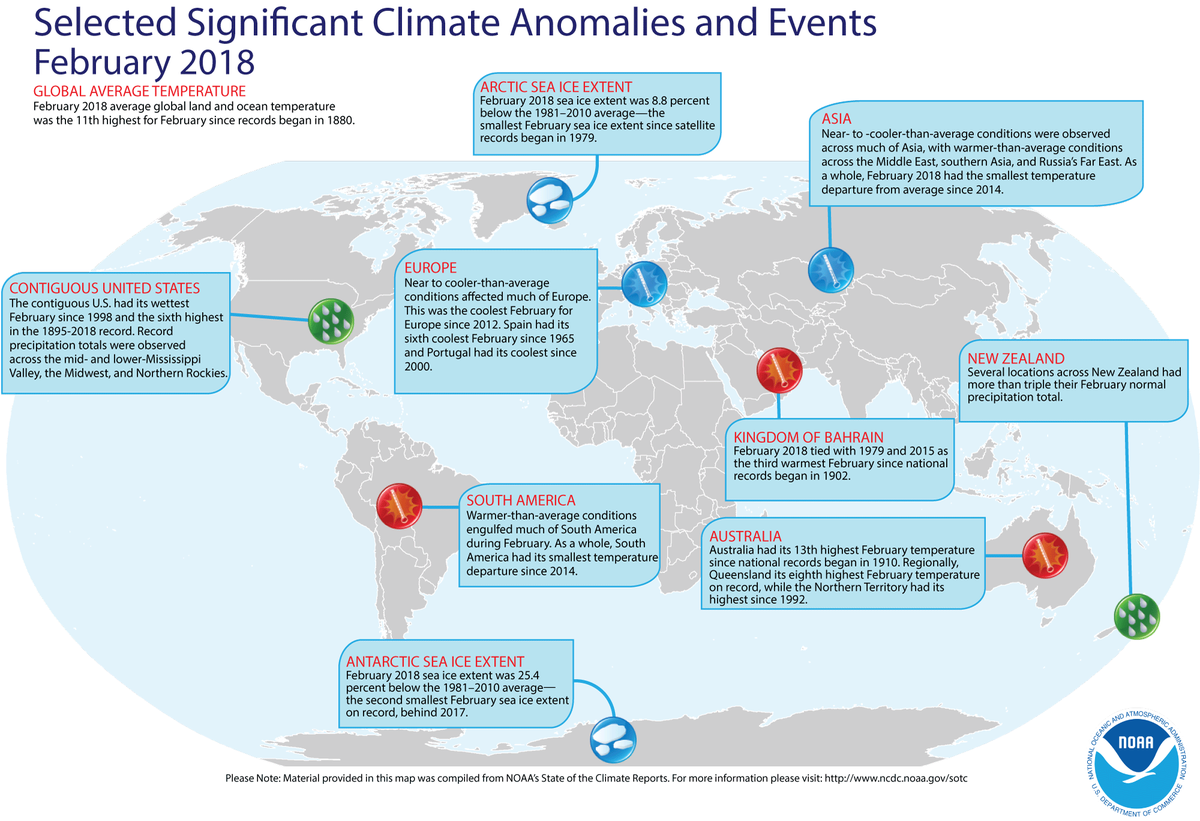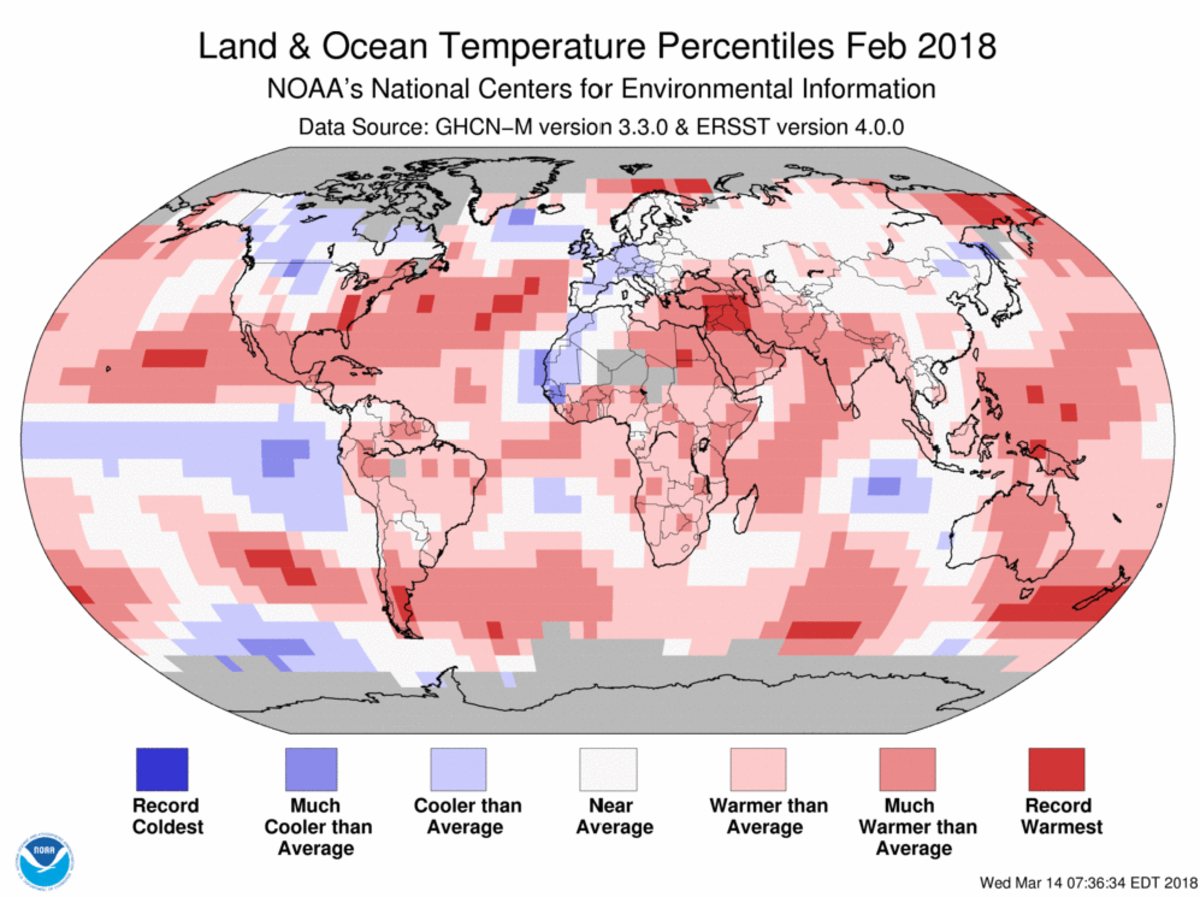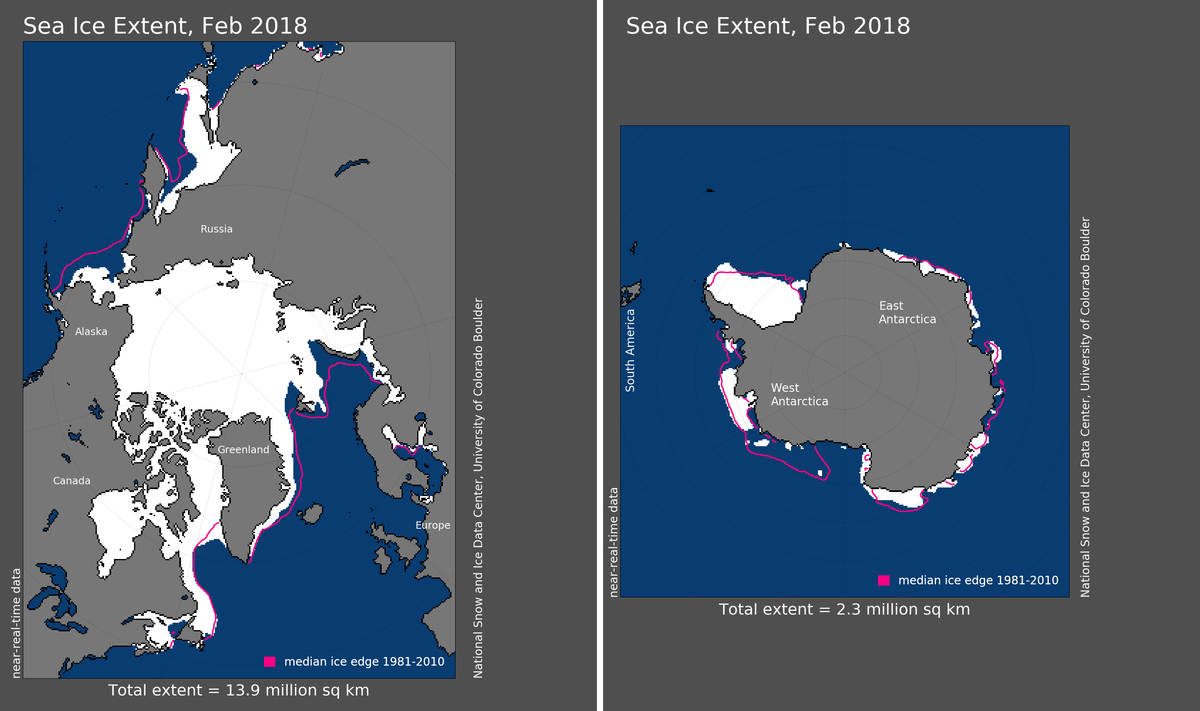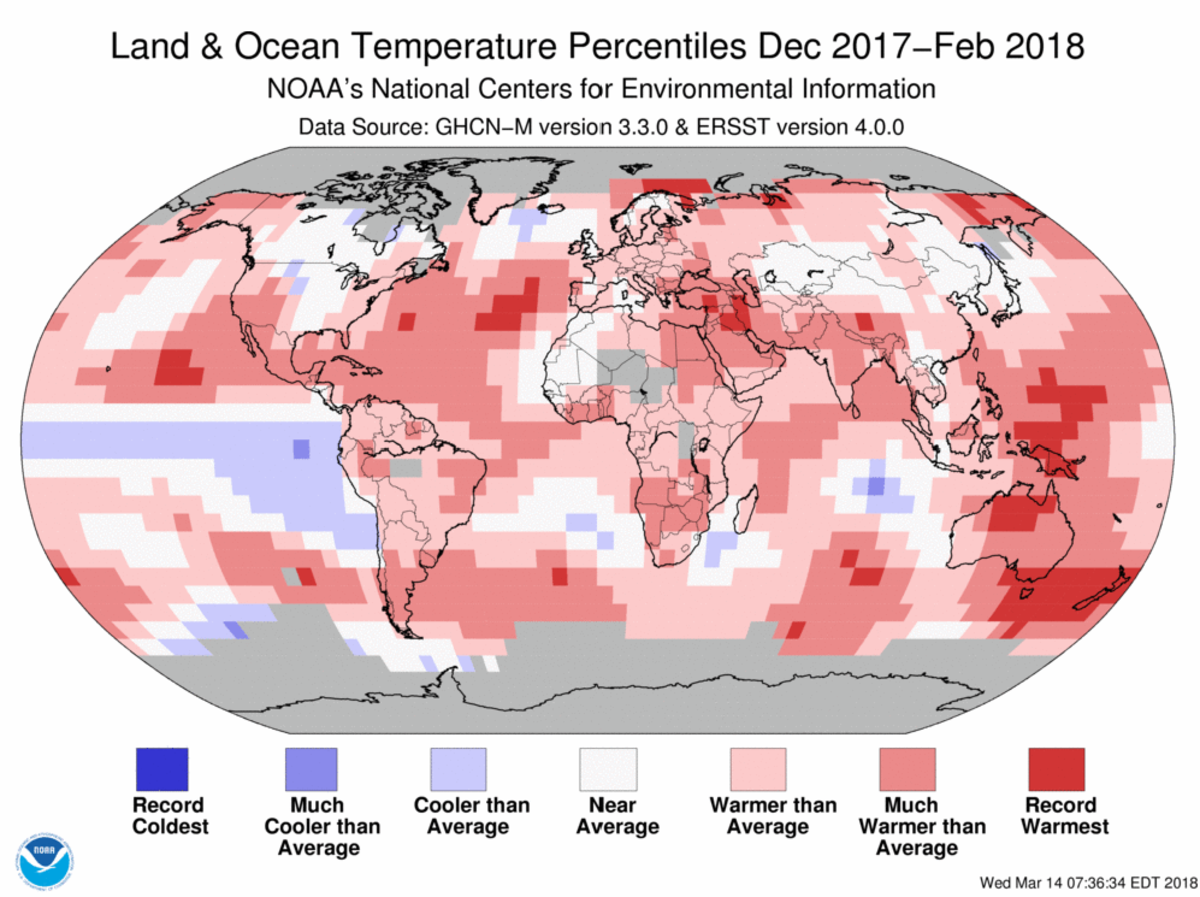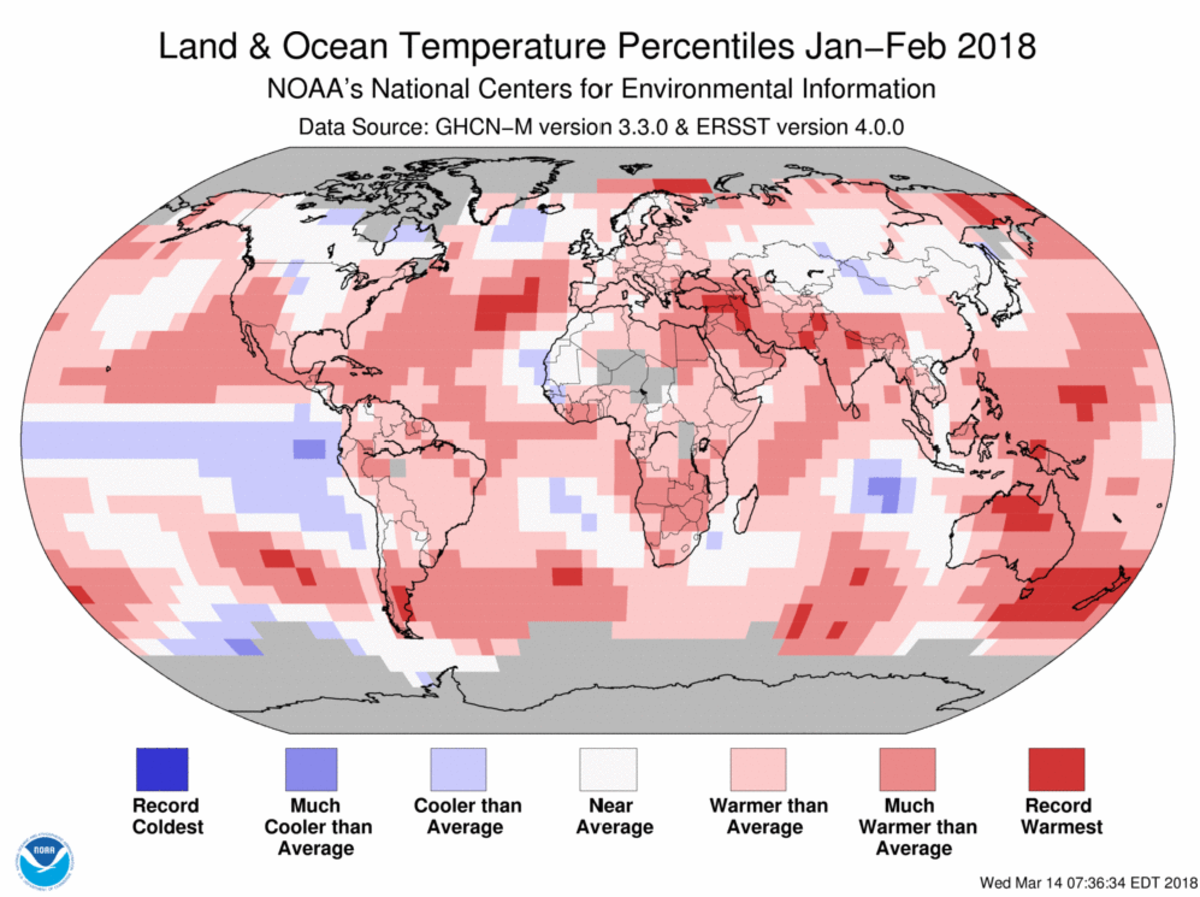Globe had its coolest February and December-February since 2014

The global land and ocean temperature departure from average for February 2018 was the 11th highest for the month of February in the NOAA global temperature dataset record, which dates back to 1880. The December-February seasonal and year-to-date global temperatures were fifth and eighth warmest on record, respectively.
This monthly summary, developed by scientists at NOAA's National Centers for Environmental Information, is part of the suite of climate services NOAA provides to government, business, academia and the public to support informed decision-making.
February 2018 Temperature
The February temperature across global land and ocean surfaces was 1.17°F above the 20th century average of 53.9°F and the 11th highest for February in the 1880-2018 record. This value is 1.03°F cooler than the record high set in 2016 and was the smallest February temperature departure from average since 2014. February 2018 also marks the 42nd consecutive February and the 398th consecutive month with temperatures above the 20th century average.
The February globally averaged land surface temperature was 1.82°F above the 20th century average of 37.8°F. This value was the 15th highest February land global temperature in the 139-year record.
The February globally averaged sea surface temperature was 0.94°F above the 20th century monthly average of 60.6°F – the smallest February ocean temperature departure from average since 2013 and the seventh highest global ocean temperature for February in the record.
February 2018 Sea Ice and Snow Cover
The February average Arctic sea ice extent was the smallest in the 39-year record at 521,000 square miles (8.8 percent) below the 1981-2010 average, according to an analysis by the National Snow and Ice Data Center using data from NOAA and NASA. The monthly extent was 62,000 square miles smaller than the previous record set just last year. Sea ice coverage was below average in the Barents and Bering Seas.
Antarctic sea ice extent during February was 310,000 square miles (25.4 percent) below the 1981-2010 average, the second smallest February extent on record. Only the Antarctic sea ice extent in February 2017 was smaller. Below-average ice coverage was observed in the Ross and West Amundsen Seas. On February 20 and 21, the Antarctic sea ice reached its annual minimum extent at 842,000 square miles, the second lowest minimum on record, and 27,000 square miles larger than the record set in March 2017.
According to data from NOAA analyzed by the Rutgers Global Snow Lab, the Northern Hemisphere snow cover extent during February was 270,000 square miles above the 1981-2010 average. This ranked near the median value in the 52-year period of record, but was the largest since 2014. The North American and Eurasian snow cover extents were each above average.
Seasonal (December 2017-February 2018)
The December-February average temperature across global land and ocean surfaces was 1.31°F above the 20th century average of 53.8°F and the fifth highest for December-February in the 1880-2018 record. This value was 0.74°F cooler than the record high set in 2016 and was the smallest December-February temperature departure from average since 2014.
The globally averaged land surface temperature for December-February was 2.18°F above the 20th century average of 37.8°F. This was the seventh highest for December-February in the 139-year record.
The December-February globally averaged sea surface temperature was 0.99°F above the 20th century average of 60.5°F – the sixth highest for December-February in the record.
Year-to-date (January-February 2018)
The year-to-date temperature across global land and ocean surfaces was 1.22°F above the 20th century average of 53.8°F. This was the eighth highest for January-February in the 139-year record. The 2018 year-to-date value was 0.83°F lower than the record high, set in 2016 and the coolest such period since 2014.
The year-to-date globally averaged land surface temperature was 1.91°F above the 20th century average of 37.4°F. This was the 11th highest for January-February in the record.
The year-to-date globally averaged sea surface temperature was 0.97°F above the 20th century average of 60.6°F. This was the sixth highest for January-February in the 1880-2018 record.
For a more complete summary of climate conditions and events, see our February 2018 Global Climate Report.

